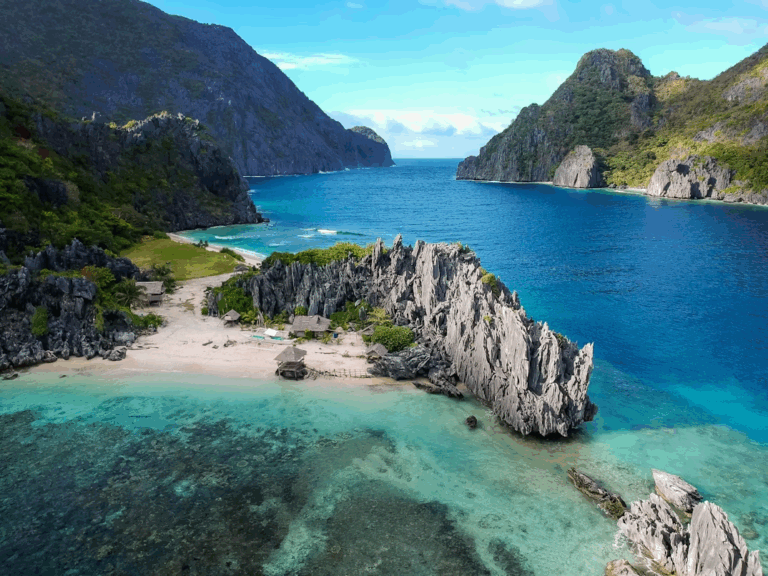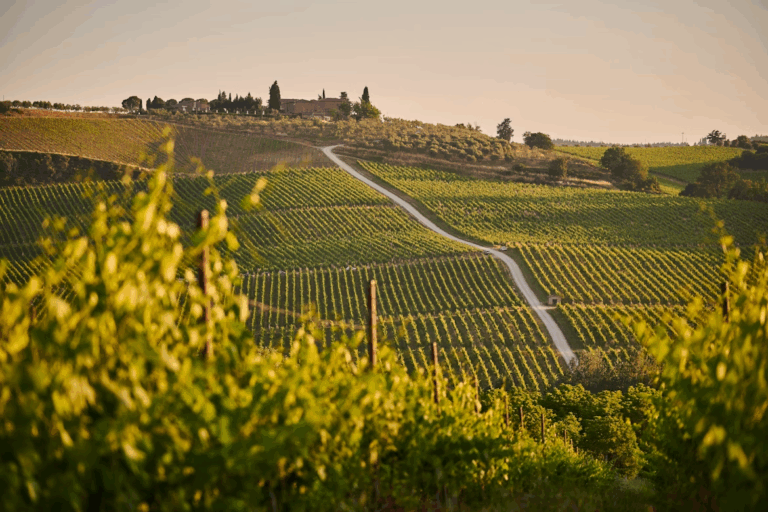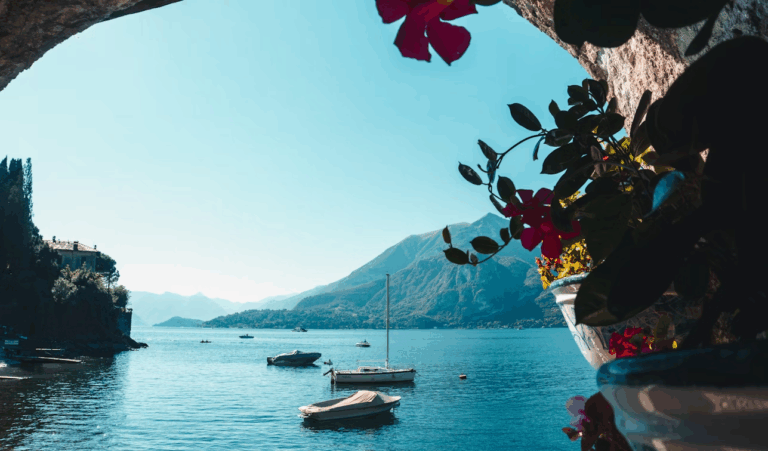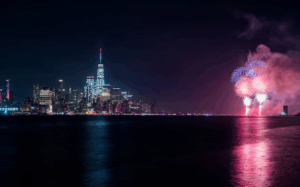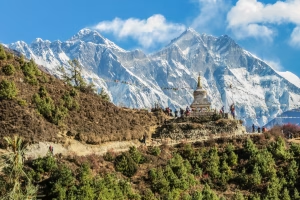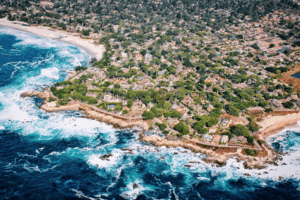Discover Eastern Europe’s most forgotten castles, from Romania’s Gothic fortresses to Slovakia’s hidden gems. Explore medieval architecture, vampire legends, and off-the-beaten-path adventures.
Eastern Europe harbors some of the world’s most captivating medieval castles, many remaining largely unknown to mainstream tourism. These forgotten fortresses tell stories of legendary rulers, Gothic architecture, and mysterious legends that shaped the region’s rich history. From Romania’s Carpathian Mountains to Slovakia’s dramatic peaks, these hidden gems offer travelers authentic experiences away from crowded tourist destinations.
Unlike their famous Western European counterparts, Eastern Europe’s forgotten castles provide intimate encounters with medieval history. Many sit abandoned or partially restored, creating an atmospheric journey through time that photography enthusiasts and history lovers find irresistible.
Romania’s Hidden Gothic Fortresses
Corvins’ Castle: Transylvania’s Forgotten Gothic Masterpiece
Located in Hunedoara, Corvins’ Castle stands as one of Europe’s largest and best-preserved Gothic castles, yet remains surprisingly unknown to many travelers. Built by John Hunyadi in the 15th century, this fortress showcases exceptional Gothic and Renaissance architectural elements.
The castle features over 50 rooms, including the impressive Knight’s Hall with its soaring vaulted ceilings. Medieval frescoes still adorn many walls, while the castle’s defensive systems demonstrate advanced military architecture. The famous Nebojsa Tower and the castle’s drawbridge system remain functional examples of medieval engineering.
Visitors can explore torture chambers, admire intricate stonework, and walk through halls where legendary figures once planned military campaigns against Ottoman forces. The castle’s relatively low tourist numbers make it perfect for photography and contemplative exploration.
Rasnov Citadel: Mountain Fortress of the Saxons
Built by Teutonic Knights in the 13th century, Rasnov Citadel represents one of Romania’s best-preserved peasant fortresses. Unlike aristocratic castles, this citadel served as a community refuge where entire villages could shelter during invasions.
The fortress features unique civilian architecture, including houses, workshops, and a remarkable 146-meter-deep well carved through solid rock. The citadel’s strategic position offers spectacular views of the Carpathian Mountains and surrounding valleys.
Modern visitors can explore the restored houses, visit the museum showcasing medieval life, and experience the atmosphere of a genuine medieval community fortress. The citadel’s walls still bear marks from historical sieges, providing tangible connections to Romania’s defensive heritage.
Poenari Castle: Vlad the Impaler’s True Fortress
Perched dramatically on a cliff in Romania’s Arges Mountains, Poenari Castle represents one of Eastern Europe’s most historically significant yet overlooked fortresses. Built in the 13th century and later strengthened by Vlad III (Vlad the Impaler), this castle requires a challenging 1,480-step climb to reach.
The fortress offers breathtaking panoramic views of the Arges Valley and Fagaras Mountains. Unlike the tourist-heavy Bran Castle, Poenari provides an authentic connection to Vlad’s actual residence. The partially ruined walls and towers create a haunting atmosphere that perfectly captures medieval Romania’s turbulent history.
Archaeological evidence suggests the castle served as a strategic military outpost controlling important mountain passes. Today, adventurous travelers can explore the remaining towers and defensive walls while experiencing the isolation that made this fortress nearly impregnable.
Slovakia’s Dramatic Clifftop Castles
Orava Castle: Slovakia’s Most Photogenic Fortress
Dramatically perched on a rocky cliff, Orava Castle is a masterpiece of Gothic and Renaissance architecture. Overlooking the Orava River, this 13th-century fortress seems taken straight from a fairy tale.
This remarkable castle complex spreads across multiple levels, following the natural contours of its cliff-top position.
The castle’s unique architecture represents seven centuries of building phases, creating a fascinating mixture of Gothic, Renaissance, and Baroque elements. Over 150 rooms house extensive collections of medieval weapons, period furniture, and historical artifacts.
Orava Castle gained international recognition as a filming location for Nosferatu, adding to its mysterious reputation. The castle’s dramatic silhouette against the Tatra Mountains creates one of Eastern Europe’s most photographed medieval scenes, yet visitor numbers remain manageable throughout most of the year.
Spis Castle: Europe’s Largest Castle Complex
Recognized as a UNESCO World Heritage Site, Spis Castle sprawls across 41,426 square meters, making it one of Europe’s largest castle complexes. Built in the 12th century, this fortress commanded vital trade routes through the Carpathian Mountains.
The castle’s massive walls enclose residential buildings, churches, and defensive towers representing various architectural periods. The Romanesque palace, Gothic chapel, and Renaissance additions create a comprehensive overview of medieval architectural evolution.
Archaeological excavations continue to reveal new aspects of castle life, including sophisticated water management systems and evidence of extensive workshops. The castle’s elevated position provides panoramic views across the Spis region and distant Tatra peaks.
Bojnice Castle: Romantic Revival Architecture
While Bojnice Castle represents 19th-century romantic revival rather than original medieval construction, its fairy-tale appearance and historical collections make it one of Slovakia’s most enchanting destinations. Built on foundations of an original medieval castle, the current structure reflects Count Jan Palffy’s vision of ideal castle architecture.
The castle houses Slovakia’s most valuable art collections, including Gothic altarpieces, medieval weapons, and period furniture. The famous ghost tours capitalize on numerous paranormal legends associated with the castle’s romantic architecture.
Extensive gardens surround the castle, featuring rare trees and romantic pavilions that complement the neo-Gothic architecture. The castle’s proximity to thermal spas makes it an excellent base for exploring Slovakia’s spa culture alongside medieval history.
Poland’s Fortress Heritage
Malbork Castle: Medieval Military Engineering
Malbork Castle, the largest castle complex in the world, boasts a remarkable medieval dungeon. Visitors can explore its underground passages, feel the atmosphere of the prison cells, and uncover the castle’s military history.
This massive fortress served as the capital of the Teutonic Knights’ state.
The castle demonstrates exceptional medieval military architecture, with sophisticated defensive systems including murder holes, portcullises, and multiple defensive lines. The Grand Master’s Palace showcases the wealth and power of the medieval religious military order.
Restoration work continues to reveal the castle’s original grandeur, including intricate brick Gothic architecture and advanced heating systems. The castle’s museum collections include medieval weapons, armor, and artifacts that illustrate life in the medieval religious military community.
Wawel Castle: Royal Heritage and Dragon Legends
Perched above Krakow’s Vistula River, Wawel Castle served as the residence of Polish kings for over 500 years. The castle complex includes the Gothic cathedral where Polish monarchs were crowned and buried, creating a sacred site of national importance.
The castle’s architecture spans from Romanesque foundations through Renaissance additions, with each period adding layers to the complex’s historical significance. The royal apartments contain exceptional tapestry collections and period furnishings that illustrate royal court life.
Legend attributes the castle’s location to a dragon’s defeat, and the dragon’s den beneath the castle remains a popular attraction. The castle’s position overlooking Krakow provides excellent views of the historic city center and surrounding landscape.
Czech Republic’s Hidden Gems
Karlštejn Castle: Imperial Treasure Fortress
Karlstejn Castle, founded in 1348, may be the most visited of all due to its proximity to Prague. It holds a unique and distinguished place among Czech castles.
It was built by the Czech king and Roman emperor Charles IV as a place to store royal treasures, especially collections of imperial regalia and holy relics.
The castle’s Gothic architecture represents the height of 14th-century building techniques, with sophisticated defensive systems protecting the precious imperial collections. The Holy Cross Chapel contains exceptional medieval frescoes and served as the ultimate sanctuary for the most sacred relics.
The castle’s terraced design follows the hillside’s natural contours, creating a dramatic approach through multiple defensive lines. Recent restoration has revealed original medieval decorations and architectural details that demonstrate the castle’s importance to the Holy Roman Empire.
Český Krumlov Castle: Bohemian Gothic Splendor
This sprawling castle complex overlooks the medieval town of Český Krumlov, creating one of Europe’s most perfectly preserved historical landscapes. The castle’s 13th century origins evolved through successive building campaigns, resulting in a fascinating architectural mixture.
The castle features exceptional Renaissance gardens, Baroque theater, and Gothic residential quarters that illustrate aristocratic life across multiple centuries. The famous painted tower showcases remarkable trompe-l’oeil decorations that create convincing three-dimensional effects.
The castle’s elevated position provides spectacular views of the meandering Vltava River and the remarkably preserved medieval town below. The combination of castle and town creates a UNESCO World Heritage landscape that transports visitors directly into medieval Bohemia.
Architectural Styles and Historical Significance
Gothic Architecture in Eastern European Castles
Eastern European castles showcase exceptional Gothic architecture adapted to local conditions and defensive requirements. The region’s Gothic castles typically feature massive stone walls, pointed arch windows, and sophisticated vaulting systems that demonstrate advanced medieval engineering skills.
Local variations include distinctive tower designs, specialized defensive features like murder holes and machicolations, and integration with natural landscape features. The use of local stone and brick creates regional architectural characteristics that distinguish Eastern European Gothic from Western models.
Many castles incorporate Byzantine influences reflecting the region’s complex cultural heritage, creating unique architectural fusions not found elsewhere in Europe. These stylistic combinations make Eastern European castles particularly fascinating for architecture enthusiasts.
Medieval Defensive Systems
Eastern European castles developed sophisticated defensive systems responding to evolving military threats throughout the medieval period. Concentric defensive lines, strategic gate placements, and integrated artillery positions demonstrate continuous adaptation to changing warfare technologies.
The region’s castles often feature exceptional preservation of defensive elements including drawbridges, portcullises, and barbicans that provide authentic examples of medieval military architecture. Underground passages, sally ports, and communication systems reveal the complexity of medieval fortress design.
Archaeological evidence continues to reveal advanced defensive technologies including sophisticated water management, food storage systems, and communication networks that enabled extended sieges. These discoveries enhance understanding of medieval military engineering and daily castle life.
Planning Your Castle Exploration
Best Times to Visit
Eastern European castle exploration benefits from careful seasonal planning. Late spring through early fall provides optimal weather for climbing to clifftop fortresses and exploring outdoor castle areas. Summer months offer extended daylight hours perfect for photography, while shoulder seasons provide fewer crowds and atmospheric weather conditions.
Winter visits can be magical but require preparation for potentially harsh weather and limited access to some clifftop locations. Many castles offer special winter programs including medieval Christmas markets and atmospheric evening tours that create unique seasonal experiences.
Regional weather patterns vary significantly, with mountain castles experiencing different conditions than valley locations. Checking local weather forecasts and seasonal accessibility is essential for successful castle exploration.
Transportation and Accessibility
Most forgotten castles require more complex transportation arrangements than major tourist destinations. Rental cars provide maximum flexibility for reaching remote locations, while public transportation serves castles near major cities and towns.
Many clifftop castles require significant climbing or hiking to reach, making physical preparation important for castle exploration. Proper footwear, weather protection, and basic hiking equipment enhance safety and comfort during castle visits.
Some castles offer limited visitor facilities, making advance planning for food, water, and restroom access important. Researching individual castle visitor information ensures successful exploration of these remarkable historical sites.
Photography and Documentation
Eastern European castles provide exceptional photography opportunities, from dramatic architectural details to sweeping landscape views. Early morning and late afternoon lighting creates optimal conditions for castle photography, while misty or stormy weather can enhance atmospheric effects.
Drone photography requires careful attention to local regulations, as many castle locations have restrictions protecting both historical sites and privacy. Traditional photography techniques often prove more reliable for documenting castle visits.
Keeping detailed travel journals enhances castle exploration by recording historical information, architectural observations, and personal reactions that create lasting memories beyond photographs. Sketching architectural details can provide deeper understanding of medieval building techniques.
Frequently Asked Questions
What makes Eastern European castles different from Western European ones? Eastern European castles typically feature unique architectural adaptations to local geography, climate, and cultural influences. Many incorporate Byzantine elements, specialized defensive features for steppe warfare, and distinctive regional building materials that create architecturally unique structures.
Are these forgotten castles safe to visit? Most forgotten castles maintain basic safety standards, though some ruined locations require careful exploration. Visitors should stay on marked paths, wear appropriate footwear, and exercise caution around steep drops or unstable structures. Checking current accessibility information before visiting ensures safe exploration.
How much time should I allocate for castle visits? Allow 2-4 hours per castle depending on size and complexity. Larger complexes like Malbork or Spis Castle benefit from full-day visits, while smaller fortresses can be explored in shorter timeframes. Factor in travel time to remote locations and potential hiking requirements.
What’s the best way to learn about castle history during visits? Many castles offer guided tours, audio guides, or informational materials that enhance historical understanding. Pre-visit research using reliable historical sources provides context that enriches the castle experience. Some castles feature living history demonstrations or medieval festivals that bring history to life.
Can I visit these castles year-round? Most castles maintain year-round access, though winter conditions may limit access to some clifftop locations. Seasonal variations in operating hours, weather conditions, and special programs make advance planning important for successful visits.
Key Takeaways
Eastern Europe’s forgotten castles offer authentic medieval experiences away from crowded tourist destinations. These remarkable fortresses showcase exceptional Gothic and Renaissance architecture while providing intimate encounters with the region’s complex history. From Romania’s dramatic clifftop fortresses to Slovakia’s fairy-tale castles, each location offers unique architectural features, historical significance, and atmospheric exploration opportunities.
The region’s castles demonstrate sophisticated medieval engineering, military architecture, and cultural adaptation that make them architecturally significant beyond their historical importance. Their relatively undiscovered status provides opportunities for contemplative exploration, exceptional photography, and genuine cultural immersion that mainstream castle tourism cannot match.
These medieval masterpieces stand as testaments to Eastern Europe’s rich cultural heritage, offering modern travelers authentic connections to legendary rulers, architectural innovation, and the dramatic history that shaped this fascinating region. Each castle provides a unique window into medieval life, from royal courts to military engineering, creating comprehensive understanding of European medieval civilization.
Exploring Eastern Europe’s forgotten castles reveals hidden treasures that reward adventurous travelers with unforgettable experiences. These remarkable fortresses combine historical significance, architectural beauty, and atmospheric mystery that capture the imagination and provide lasting memories of Europe’s medieval heritage. Start planning your castle adventure today and discover why these forgotten gems continue to captivate travelers seeking authentic historical experiences beyond the typical tourist trail.

